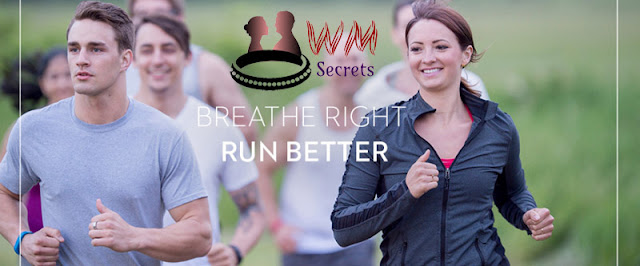Do your lungs feel heavy like lead? Are you tired of the unpleasant stinging while running? Here's how proper right breathing improves your running training and how you use it.
For running training, we should build muscle - this is important not only for our legs, ankles, and mid-body but also for our breathing (yes, we can also train our muscles for this area). But what does "breathing properly" mean? Through the nose or the mouth? Abdominal or chest breathing? There is a lot of information on the internet about how to optimize your running style. It's not just diaphragmatic breathing - when you're running, there are many more muscles involved than you think.
Muscles need oxygen during running, which is essential. There are many different breathing techniques that you can use for a longer, more intense run. For perfect running results, you first have to understand what happens in the body - that's why we've put together a few techniques that you should try next time when tying your running shoes and getting ready for a stamina workout.
Before the Run
Think of Pavarotti's classic operatic pose! This is how to achieve the perfect posture to lift the rib cage, which is ideal for a good running style. Stand upright, with your feet together, and activate your buttock muscles. Inhale and raise your arms until they are parallel to the floor (hands at shoulder level).
Your breath should be slow and in a regular rhythm, just move your arms while exhaling and keep the body steady. Inhale and exhale ten times. Then bring your arms upside down and your palms together.
During the Running Workout
The most common form of breathing while running is chest breathing - unfortunately, this breathing technique is also the weakest. The oxygen uptake is minimal and you cannot fully expand your lungs to expel carbon dioxide.
Have you ever felt an unpleasant sting while running? The reason could be chest breathing. At the next endurance workout, you should use diaphragmatic breathing. This will allow your stomach to expand and contract and air will come in and out through your lungs. Avoid superficial breathing techniques and try the following breathing rhythms for deep breathing on your next run:
While the bench press is a classic strength-building exercise, focusing on the right breathing techniques can significantly enhance your running performance. Incorporating proper breath control during your bench press workout ensures optimal oxygen intake, enhancing stamina and overall endurance for your runs.
Engage in rhythmic breathing, syncing inhalation with the lifting phase and exhalation during the lowering phase. This synchronization not only supports muscular efficiency during the bench press but also cultivates better respiratory habits crucial for sustained running performance.
Right Breathing Technique for Running Training
Your breathing depends on the intensity of the run. If you're jogging more slowly, inhale for three paces, then pause for the next three paces. If you increase the speed, you do the same with just two steps. If you want to sprint and run at maximum speed, then the breathing rhythm is 1: 1 most effective.
In general, you should breathe longer if you hit your feet on the floor, as your diaphragm and other muscles contract to stabilize your body. So you can injure yourself less easily when rolling with the foot.
You can easily train this breathing technique by doing the following exercise - lying on your back:
- Lie on your back, knees hip-width, feet flat on the floor.
- Hands are resting on the stomach, breathing in and out through the abdomen.
- Inhale through the nose and through the mouth, counting to 3. Then exhale again - also count to three.
- Concentrate on the rhythm of your breathing and make sure it is even.
- Once you get used to this 3: 3 breathing technique, you can use your feet to alternately touch the ground and mimic walking steps.
Related article: General Aerobic Activity Definition





Post a Comment